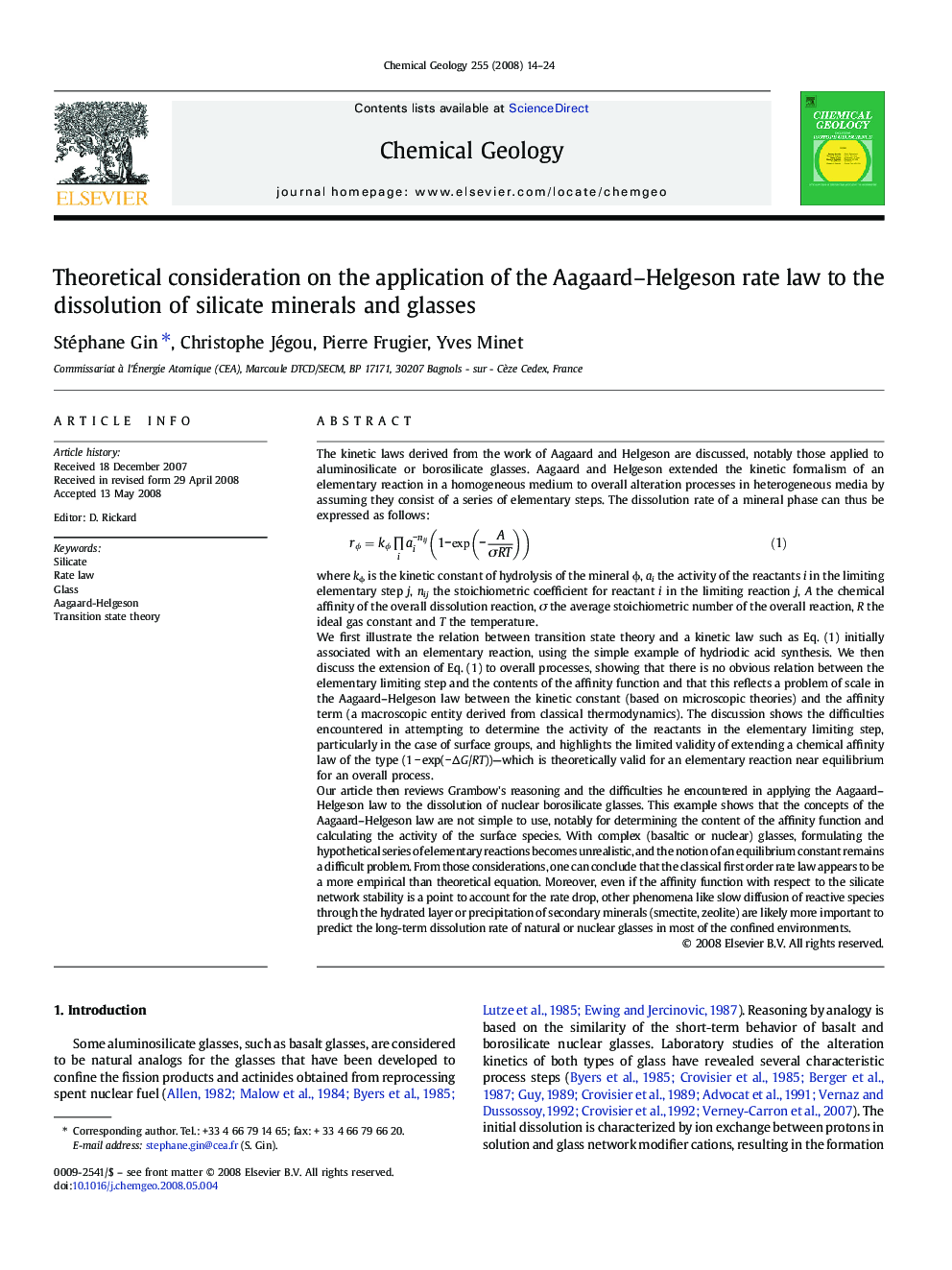| کد مقاله | کد نشریه | سال انتشار | مقاله انگلیسی | نسخه تمام متن |
|---|---|---|---|---|
| 4700663 | 1637722 | 2008 | 11 صفحه PDF | دانلود رایگان |

The kinetic laws derived from the work of Aagaard and Helgeson are discussed, notably those applied to aluminosilicate or borosilicate glasses. Aagaard and Helgeson extended the kinetic formalism of an elementary reaction in a homogeneous medium to overall alteration processes in heterogeneous media by assuming they consist of a series of elementary steps. The dissolution rate of a mineral phase can thus be expressed as follows:equation(1)rϕ=kϕ∏iai−nij(1−exp(−AσRT))where kϕ is the kinetic constant of hydrolysis of the mineral ϕ, ai the activity of the reactants i in the limiting elementary step j, nij the stoichiometric coefficient for reactant i in the limiting reaction j, A the chemical affinity of the overall dissolution reaction, σ the average stoichiometric number of the overall reaction, R the ideal gas constant and T the temperature.We first illustrate the relation between transition state theory and a kinetic law such as Eq. (1) initially associated with an elementary reaction, using the simple example of hydriodic acid synthesis. We then discuss the extension of Eq. (1) to overall processes, showing that there is no obvious relation between the elementary limiting step and the contents of the affinity function and that this reflects a problem of scale in the Aagaard–Helgeson law between the kinetic constant (based on microscopic theories) and the affinity term (a macroscopic entity derived from classical thermodynamics). The discussion shows the difficulties encountered in attempting to determine the activity of the reactants in the elementary limiting step, particularly in the case of surface groups, and highlights the limited validity of extending a chemical affinity law of the type (1 − exp(− ΔG/RT))—which is theoretically valid for an elementary reaction near equilibrium for an overall process.Our article then reviews Grambow's reasoning and the difficulties he encountered in applying the Aagaard–Helgeson law to the dissolution of nuclear borosilicate glasses. This example shows that the concepts of the Aagaard–Helgeson law are not simple to use, notably for determining the content of the affinity function and calculating the activity of the surface species. With complex (basaltic or nuclear) glasses, formulating the hypothetical series of elementary reactions becomes unrealistic, and the notion of an equilibrium constant remains a difficult problem. From those considerations, one can conclude that the classical first order rate law appears to be a more empirical than theoretical equation. Moreover, even if the affinity function with respect to the silicate network stability is a point to account for the rate drop, other phenomena like slow diffusion of reactive species through the hydrated layer or precipitation of secondary minerals (smectite, zeolite) are likely more important to predict the long-term dissolution rate of natural or nuclear glasses in most of the confined environments.
Journal: Chemical Geology - Volume 255, Issues 1–2, 30 September 2008, Pages 14–24